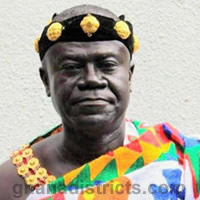Physical Features
Kwahu East lies within three physiographic regions namely the Southern Voltaian Plateau, the Forest Dissected Plateau and the Savana Plains consisting of a series of escarpments, notable among which is the Kwahu scarp rising from 220m to 640m above sea level.
Drainage
In terms of drainage the District is drained mainly by the Afram River which is a major tributary of the Volta River providing an important resource for employment in the form of fishing and irrigation farming.
Climate
The district lies within the wet semi-equatorial zone, which is characterized by double maxima rainfall in June and October. The first rainy season is from May to June, with the heaviest rainfall occurring in June while the second season is from September to October. Temperatures in the district are high and range between 26oC in August and 30oC in March. The relative humidity is high throughout the year and varies between 70 - 80 per cent.
Vegetation
The favourable climatic conditions have promoted dense forest vegetation, which covers about three quarters of the total land area of the District with the rest being savannah grassland. The forest and savannah type of soils are suitable for the cultivation of a variety of crops including cocoa, mango, oil palm and staple food crops such as cassava, yam, cocoyam, maize and vegetables. The district contributes significantly to the production of exotic crops such as watermelon and green pepper in the Eastern Region.
Political Administration
The Legislative Instrument (L.I 1839) established the Kwahu East District Assembly as the highest political and administrative authority with the mandate to initiate development and co-ordinate all activities aimed at sustained development of the District. The District Chief Executive (DCE) is responsible for the day-to-day administrative functions of the Assembly.
The District Co-ordinating Director (DCD), who heads the district bureaucracy, and is Secretary to the Assembly, and he/she assists the DCE. The district has eight Town/Area Councils, which are further subdivided into Unit Committees. The Unit Committees are consultative bodies at the grassroots and they are in close contact with the people. They are expected to organize the people for communal labour, revenue mobilization and the maintenance of environmental sanitation and other activities.
Date Created : 11/26/2017 4:23:07 AM






 facebook
facebook twitter
twitter Youtube
Youtube TOLL FREE 0800 430 430
TOLL FREE 0800 430 430 +233 593 831 280
+233 593 831 280 GPS: GE-231-4383
GPS: GE-231-4383 info@ghanadistricts.com
info@ghanadistricts.com Box GP1044, Accra, Ghana
Box GP1044, Accra, Ghana